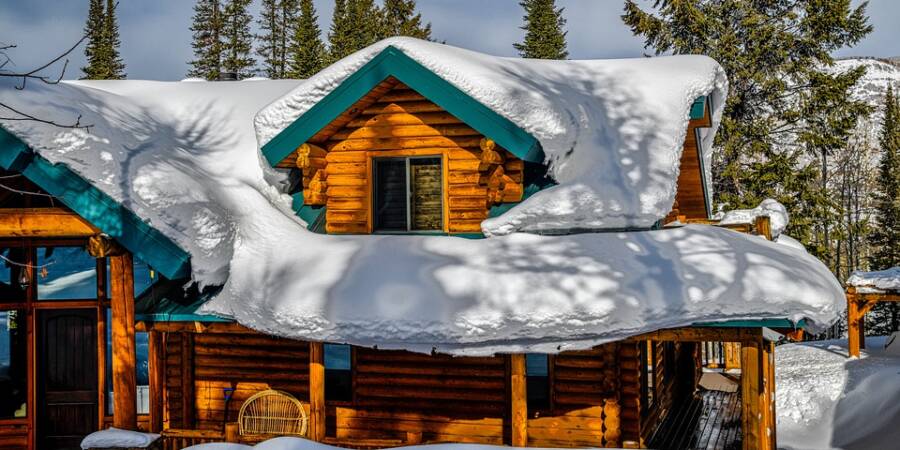No matter where you live, whether in a cold or warm climate, if you experience snow or rain, a roofing ice and water shield (also known as an ice and water protector) is necessary for the safe keeping of your home. With it, you can prevent leaks and water damage from occurring and reduce the need for repairs in the future. In this article, we will outline everything you need to know about ice and water shields.
What is Ice and Water Shield?

An ice and water shield for roofing is a waterproof membrane that serves as underlayment to protect the roof decking from leaks and water damage. Made with polymer-modified bitumen, it has an adhesive back surface that will bond to the decking, forming watertight side laps and end laps, as well as a seal around the nail penetrations when shingles are installed. There are three types of ice and water shields that you can get:
- Granular — The thinnest and cheapest type, this tends to be used in roof valleys.
- Smooth — More flexible than granular, this is typically used on low slope roofs and in places that require a better seal.
- High Heat — The most expensive type, this is commonly used on metal roofs.
What is the Benefit of Ice and Water Shield?
The main benefit of having a water and ice shield for your roof is that it helps to mitigate risks associated with extreme weather conditions, such as:
- Wind-Driven Rain — During storms, strong winds can push rainwater beneath your roof’s shingles or panels, which can cause leaks. A water and ice shield that is properly adhered to your roof can help prevent this from occurring.
- Ice Dams — After snow falls, ice dams can form on roofs due to the snow continuously melting and freezing or from a backup of slush in the rain gutters. When ice dams form, the melted water then flows under the snow and can make its way beneath the shingles, causing leaks and water damage to your home. A water and ice shield offers increased protection to prevent water from entering the house.

How Much Does Ice and Water Shield Cost?

The cost of an ice and water shield membrane varies greatly depending on the type you choose, the amount you need, the area in which you are located, and the roofing contractor you hire. The following is a breakdown of average prices based on type:
- Granular — A granular shield tends to cost around $60 per row of material (3 feet by 33 feet).
- Smooth — To start, a smooth shield costs approximately $100 per square of material (100 square feet).
- High Heat — A high heat shield typically costs around $125 or more per square of material (100 square feet).
Should I Put Ice and Water Shield on My Entire Roof?
While an ice and water shield can be put on the entire roof, it is not always necessary to do so. Oftentimes, it is only needed along the edges (also known as eaves) of the roof and in roof valleys because the other underlayment provides enough protection for the rest of the surface area, while eaves and valleys tend to have more water flowing over them.
However, if the roof has a low pitch, such as a pitch of 2:12 or less, the angle does not let water drain down completely, which means that an ice shield is required on the entire roof to ensure that it is properly protected. As well, if the roof is metal, it is often recommended to use a high heat ice and water shield as underlayment for the whole roof given that high heat will not stick to the metal panels as they expand and contract. Premium roofing materials, such as synthetic shingles and cedar shake, may also require a high heat ice and water shield on the entire roof.
How To Install Ice and Water Shield

When it comes to ice and water shield installation, it is important to ensure that the roof is dry as moisture can affect how the membrane adheres to the roof deck.
An ice and water shield should be installed before any other underlayment and below the flashing of features such as the chimneys and dormers. Depending on the type and manufacturer, installation may vary, but it is a general rule that any permanent fasteners like nails or staples are not needed because the membrane has an adhesive backing that allows it to stick to the roof on its own.
Some products may require temporary fasteners to hold the membrane in place during installation, but as the name indicates, they should be removed afterwards.
Is Ice and Water Shield Required by Code?
According to the Ontario Building Code, eave protection, which can include installing ice and water shield, is required under certain circumstances. Consulting with a professional roofer who knows the ins and outs of the code will help you determine whether or not a roof ice and water shield is compulsory for your home.
Final Thoughts
Getting an ice and water shield in Canada is an important component for your roof to prevent leaks, especially when severe rain and snow storms hit. Throughout this article, we have discussed what an ice and water shield is, the benefits of it, average costs, whether or not it can be put on the entire roof, how it should be installed, and if it is required by the Ontario Building Code.
At Dream Roof, our team of roofing contractors is here to ensure that your roof is strong and durable, lasting for years to come. Contact us today to learn more and receive a free quote for our services!

